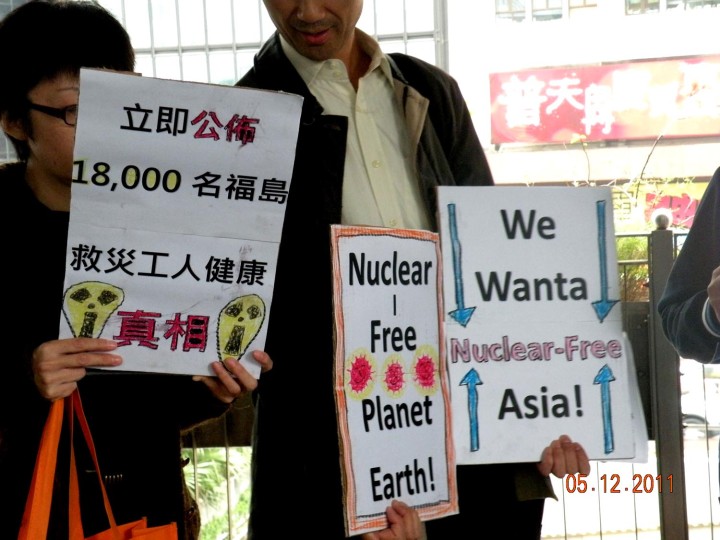Paris. 4 January 2016—UPDATE 5 January 2016 In 2015, a total of ten new nuclear reactors were connected to the world’s grids, more than in any year since 1990. Two reactors were closed, Grafenrheinfeld in Germany and Wylfa in the United Kingdom. As of 1 January 2016, a total of 398 reactors—eight more than a year ago, but 40 less than in 2002—were operating in 31 countries. Two reactors, Sendai-1 and -2, were restarted in Japan, the first since the country was shaken by the triple disaster earthquake-tsunami-radioactive fallout on the coast line of Fukushima in 2011. Most of the Japanese reactors, 38 units, remain in Long-Term Outage (LTO). An additional reactor in Belgium, Doel-1, was restarted after the Belgian nuclear phase-out legislation was amended in order to extend the lifetimes of Doel units 1 and 2 by ten years. However, the decision does not affect the legal date for nuclear phase-out completion in 2025.
Whereas the nuclear industry’s situation in the rest of the world continued to deteriorate developments in China bucked this trend and distort the global picture. In 2015 China contributed eight out of the ten reactor startups—resulting in a total of 31 operating units—and six of the seven new building sites in the world. The other startups were in South Korea and Russia (after 31 years of construction), while outside China only one new-build project was launched, at Barakah in the United Arab Emirates. Of the 62 nuclear power plants with a combined capacity of 60 gigawatts now under construction in 14 countries, 24 units (24 gigawatts of capacity) are located in China. The world total is down 8 percent from a 25-year-high of 67 reactors in various building stages in 2013.
In 2009, China launched the construction of seven of the nine units in the world and in 2010, ten out of 15. Since the Fukushima disaster started unfolding in 2011, the number of construction starts globally plunged to three in 2014. Even in China construction starts slowed and over the five years 2011—2015 only 13 new projects were started, just three more than in 2010 alone. In 2015, the Chinese government granted permission for the building of eight reactors, however, it remains to be seen, whether China can maintain such a high expansion speed and thus remain the exception to the global trend.

The Paris Agreement on climate change did not provide the push for nuclear power the industry had hoped and intensely worked for. The term “nuclear” does not even appear in the 32-page Agreement. While nuclear builders and the traditional utilities continue to struggle with the rapidly changing energy sector environment. The French state-controlled AREVA, having announced an outlook of a further “heavy loss” in 2015, was downgraded by credit-rating agency Standard & Poor’s to B+ (“highly speculative”). On 29 December 2015, the company plunged to a new historic low on the stock market (€5.30 compared to €72.50 eight years ago). On 7 December 2015, Euronext ejected the French heavy weight Électricité de France (EDF), largest nuclear utility in the world and “pillar of the Paris Stock Exchange”, from France’s key stock market index, known as CAC40. One day later, EDF shares lost another four percent of their value, which led to a new low, a drop of over 85 percent from its 2007 level. Two days later, the trade union representatives at the Central Enterprise Committee of EDF—unanimously and for the first time—launched an official “economic alert procedure” considering the “seriousness of the situation”.
The French nuclear industry’s international competitors are not doing much better. AREVA’s Russian counterpart Atomenergoprom as well as the Japanese controlled Toshiba-Westinghouse were both downgraded to “junk” (“speculative”) by credit-rating agencies during the year. The Chinese utility China General Nuclear Power Corporation (CGN), listed on the Hong Kong stock exchange, lost 45 percent of its stock value since June 2015, more than EDF in the same timeframe (—35 percent). Both companies cooperate on the Taishan project that comprises of two European Pressurized Water Reactors (EPRs) which is now more than two years behind schedule. This is still significantly better than the two other EPRs under construction in Europe, where Olkiluoto-3 in Finland is nine years behind schedule and the startup of the Flamanville-3 unit in France has been delayed by at least six years. EDF had claimed in January 2015 that Taishan-1 would be commissioned “by the end of the year”, which did not happen. However, the construction schedule might slip further following the discovery of serious fabrication flaws in the forgings of the Flamanville EPR pressure vessel head and bottom, made public by the French Nuclear Safety authorities in April 2015. No final decision on the safety case is expected before the end of 2016. The equivalent parts of the Taishan EPRs, forged in the same French AREVA facility are likely to have identical flaws. It remains to be seen how the Chinese safety authorities will deal with the issue. Their attitude will be closely monitored by international observers as China embarks on a strategy of exporting its nuclear technology to other countries.
Note: Other overviews of nuclear developments in 2015 (for example by World Nuclear News) or the International Atomic Energy Agency (IAEA) indicate 8 units shut down over the year. However, six of these reactors (Mihama-1 and -2, Tsuruga-1, Shimane-1, Genkai-1 in Japan and Oskarshamn-2 in Sweden) have not generated any electricity in 2015, and were thus closed before. WNISR defines startup as grid connection and shutdown as final grid disconnection. The WNISR statistics are therefore modified retroactively to the date of latest power generation once the decision for a final closure has been taken.
For original article and more see: http://www.worldnuclearreport.org/UPDATE1-World-Nuclear-Industry-Status-as-of-1-January-2016-Mind-the-China.html










